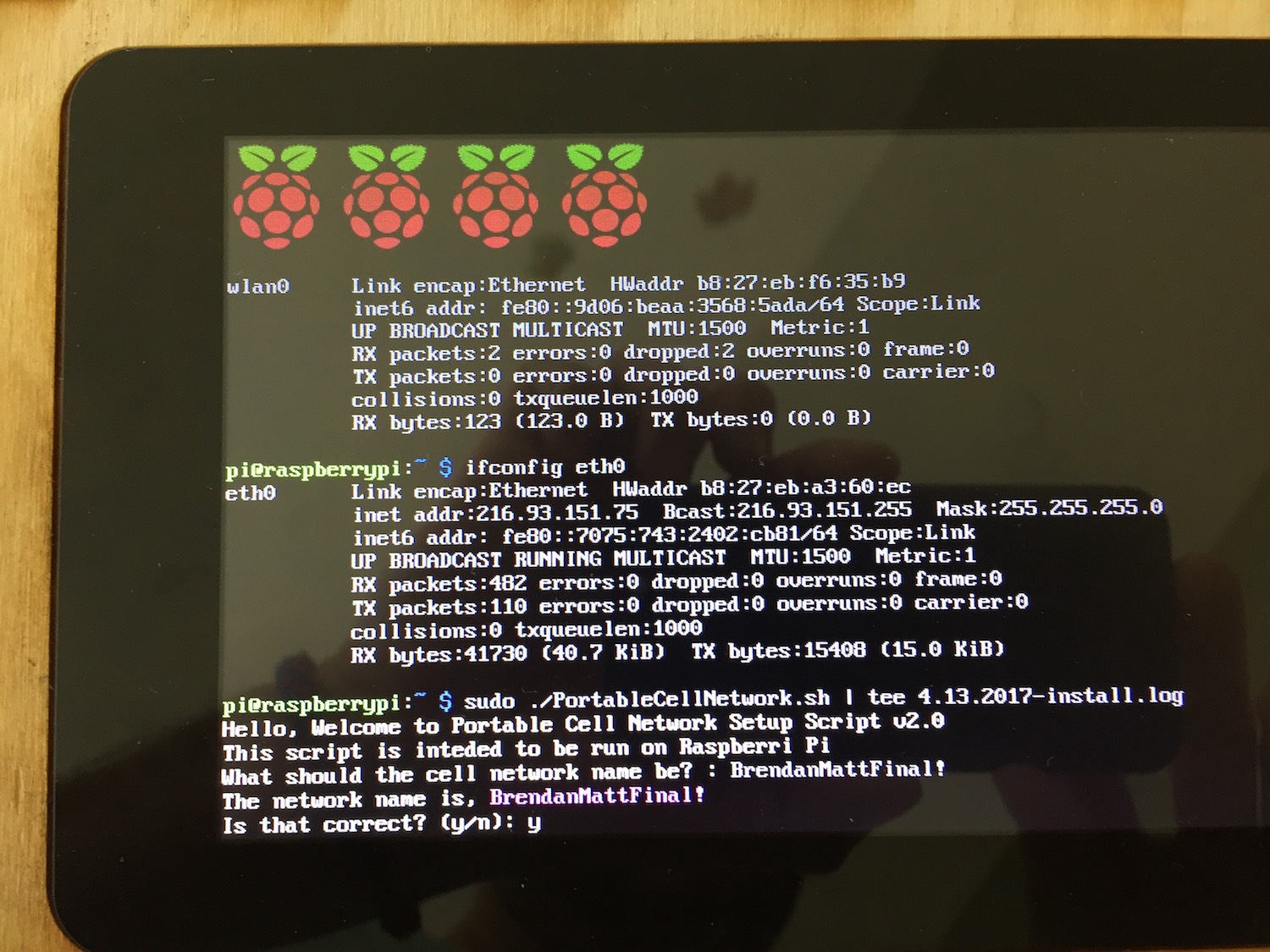If you’re concerned about private communication, there are a growing number of options, like Signal and PGP. Or, if you’re two creative college kids, you could just build your own cell phone network.
Matthew May and Brendan Harlow are two recent graduates of Champlain College in Vermont where, this spring, they built a portable, mini cell network for a senior project. Though their device was just a prototype—it was able to connect phones no more than 60 feet apart—the design shows that it’s possible to build a functional, portable tower of your own for completely off-the-grid communications.
Videos by VICE
“This isn’t a replacement for global calling or anything,” May told me in a phone interview. “You can think of it like glorified walkie-talkies, but with the ability to do voice calls, text message, and use it like a regular cell phone in a local setting.”
To build it, May and Harlow gathered a Raspberry Pi (a versatile, single-board computer), an LCD touchscreen, a radio broadcast device called a bladeRF, programmable SIM cards, and a USB SIM card writer. The bladeRF and the card writer were both hooked into the Raspberry Pi, and the pair installed software onto the Pi to be able to use the Blade’s interface, generate SIM card IDs, and assign phone numbers.
Read more: Ham Radio Hobbyists Are Connecting the Caribbean After Hurricane Maria
They told me the hardware side of the process was pretty straightforward, but the challenging part was getting all the different software to talk to each other and quickly perform the tasks they wanted.

“It was a lot of trial and error because the technology we were using didn’t have a lot of documentation available to us,” Harlow told me. “We had a lot of trouble with programming the SIM cards at first. There’s a lot of outdated protocols used with cards. Acquiring programmable SIM cards was a challenge.”
Harlow told me they also struggled to get a strong enough signal from the bladeRF and ended up swapping out the standard antennae for more powerful ones to improve the connection. But in the end, they were able to overcome these obstacles and build a functioning, portable, mini cell tower that allows any device on the network to contact any other device. If the tower itself is hooked up to the internet, you can even use data on your phone when connected to the network.
The pair told me they thought this kind of technology could be useful in an emergency situation when traditional cell networks can get overloaded or fail. If emergency response teams like police had a network like this at the ready, they’d be able to communicate quickly. In Puerto Rico right now, a week after Hurricane Maria, cell networks are still down. Tech like this could provide a pop-up emergency network in the wake of similar disaster.
With more advanced technology, and an unlimited budget (May told me the bladeRF is $400 alone), you could use the team’s project—which is publically available on Github—as a guideline to build your own private network.
These days, Harlow and May are both starting their careers in cybersecurity, but they hope their open source project might help make it a little easier for the next person trying to build their own network.
As for the senior project? They got an A+.
Get six of our favorite Motherboard stories every day by signing up for our newsletter.




